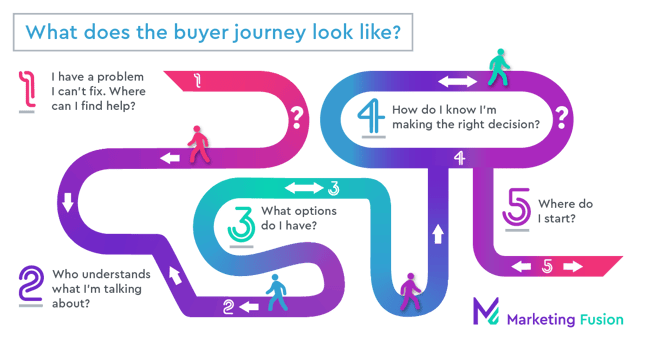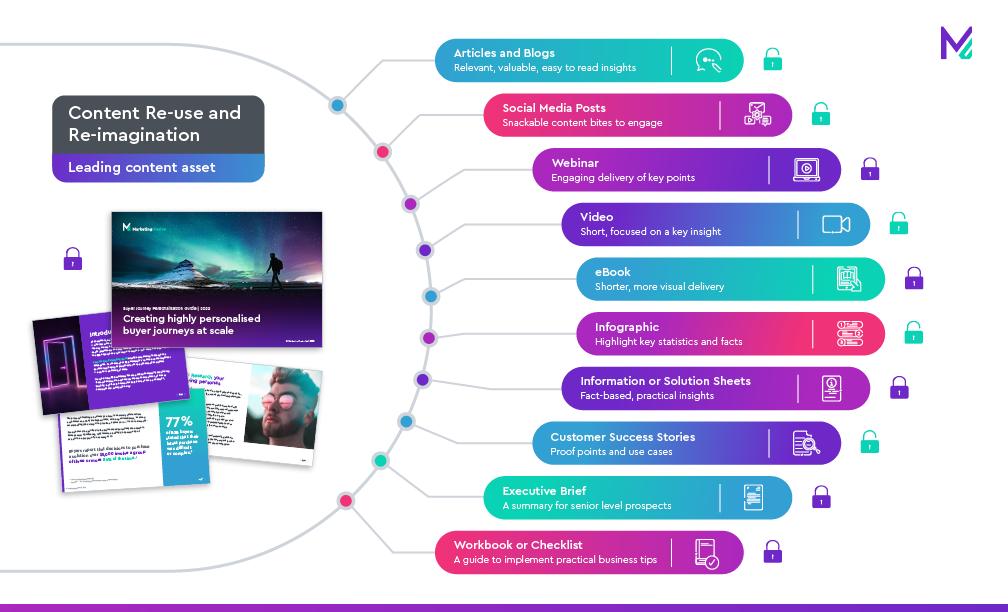Diana Tucker
7 Dec 2022

As marketing budgets come under intense pressure, companies should aim to reuse, repurpose, reimagine and reinvigorate as much of their existing content as practical in 2023.
In our last blog, we looked at how much value could potentially be derived from a single piece of thought leadership. Extend this approach across the whole organisation, and the entire buyer journey, and you have the opportunity to create a whole ‘new’ suite of materials for a relatively modest investment.
A content audit should be the first step in the development of any content strategy. In this case, it will help you to winkle out all of the assets within your organisation that are underperforming, are out of date, or have simply been forgotten about. You’ll also be able to identify and address any gaps that exist.
Once you’ve rounded everything up, take each piece of content that has fallen out of use, or isn’t delivering the results it should, and dig into the reasons why. Is it too long? Is it presented in a hard to digest format? Is it designed using the old branding? Does it contain data that’s on the elderly side, or mention clients you no longer work with?
Inevitably, some of the collateral you review will be too timeworn to resurrect, or simply no longer fit for purpose. Anything that still contains relevant insights, messages or information, however, can be converted into an asset (and in some cases multiple assets in a variety of formats) that will drive your marketing objectives.
Improving a piece of collateral could be as simple as redesigning it to reflect the latest branding, or rewriting an introduction to address a pain point that’s currently keeping your audience awake at night.
A common reason that content fails to hit the spot is that it’s targeted at the wrong buying stage, or – worse – not targeted at all! Research from Sirius Decisions has found 70% of the B2B buying process is done before the buyer meets with sales – so it’s crucially important that your content works for you by delivering the right messages for each step on the buyer journey.

In light of this, we recommend that you review the value of each piece of collateral you want to repurpose in relation to your buyer journey. The graphic below illustrates our take on what that might look like – but we recognise that every company’s buyer journey is unique, and that these days it’s often anything but linear. Typically, in the early stages you’ll need to grab their attention, then provide deeper context to explain and convert as they move on. The ultimate goal is to drive your prospects through the stages.
Ask yourself: what stage in the journey is the piece aimed at? What are buyers looking for at this stage? What questions do they need answering? What concerns do they have? What are the barriers to taking the next step – and the motivations? What does the buyer need to get themselves to the next stage? And how can this piece of content get them there?
It’s worth taking the time to understand the different touchpoints your own prospects need to take them through the journey, This will help you tailor content appropriately, and ensure you don’t leave anybody ‘lost’ somewhere along the way.
In this graphic we’ve taken the white paper we used as an example in our previous blog, and suggested which stage of our buyer journey each smaller asset created from that ‘parent’ content could be aimed at. Of course, exactly what you create, and how many pieces you produce, is up to you.

So as you shape your content strategy for 2023, try mapping your assets to each of these stages. Make sure you repurpose and recycle existing pieces that are still relevant – they will most likely be full of valuable gems that will help you stand out in the market when edited or presented in a different way.
Talk to us now about getting started with your 'new' content to boost your 2023 Q1!
Suite LP60947, 20-22 Wenlock
Road, London, N1 7GU
©2015-2025 Marketing Fusion Ltd. | All Rights Reserved
VAT: 166973166 | Company Registration Number: 8454651 | Privacy Policy